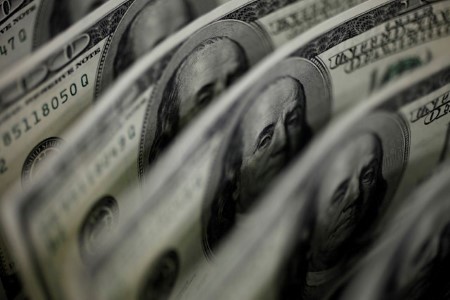




Philippines Trade Update: Trade trajectories trend along
 DOWNLOAD
DOWNLOAD

Policy Rate Updates: Double cut finale
 DOWNLOAD
DOWNLOAD

Monthly Economic Update: One for the road
 DOWNLOAD
DOWNLOAD


US yields decline as economic data points to moderate slowdown

NEW YORK, June 28 – US Treasury yields declined slightly on Thursday after economic data showed a continued, though moderate, slowdown in economic activity.
The Commerce Department’s Bureau of Economic Analysis released estimates showing gross domestic product increased at a revised 1.4% annualized rate last quarter, up from a previous 1.3% estimate. Real consumption growth was revised down to 1.5% from 2%, indicating a slowdown in consumer spending due to a combination of high interest rates and sticky price pressures.
“The 1.4% reading is solid, but indicates that economic growth is slowing, although still comfortably above recession levels,” said Chris Zaccarelli, chief investment officer for Independent Advisor Alliance, in a note. Growth was 3.4% in the fourth quarter last year.
Data on Thursday also showed first-time applications for U.S. unemployment benefits drifted lower last week, which could assuage concerns over a material deterioration in the labor market. At the same time, so-called continuing claims for unemployment benefits increased 18,000 to a seasonally adjusted 1.839 million during the week ending June 15, the highest since November 2021.
Benchmark 10-year yields, which move inversely to prices, dropped after the data and were last at 4.288%, three basis points lower than on Wednesday. Two-year yields, which more closely indicate monetary policy expectations, were also down about three points to 4.716%.
Yields edged lower also after a USD 44 billion seven-year Treasury note auction, which saw solid investor demand. The notes were sold at a high yield of 4.276%, slightly below the expected rate at the time of the bid deadline, a sign that investors were willing to pay up.
Still, Treasury yields remained overall in line with recent levels, as investors weighed signs of the economy slowing against a number of factors, including the rising U.S. government debt burden, that could delay a much anticipated shift by the Federal Reserve to a less restrictive stance.
“You can find weakness in a lot of economic data … but yields can’t seem to break 4.2%,” said Craig Brothers, senior portfolio manager and head of fixed income at Bel Air Investment Advisors, referring to 10-year bonds.
That was due to large amounts of debt supply, as well as the slow decrease in inflationary pressures, he said. “As much as the Fed wants everyone to feel great that we’re making progress towards their target of 2% (inflation), I don’t think we’re going to get there very easily.”
Kathryn Rooney Vera, chief market strategist at StoneX, said unless price pressures drop sharply over the coming months, the Fed is unlikely to lower rates until December.
“I don’t think this combination of data says deceleration and the Fed is going to start cutting,” she said.
Investors on Thursday were pricing for nearly two 25 basis point rate cuts this year, but they will be looking for more clues on the path of interest rates with the release of personal consumption expenditure inflation data on Friday.
Also on investors’ radars will be a face-off between US President Joe Biden and Republican former president Donald Trump in a TV debate later on Thursday.
“If Trump does well … (and) it becomes clearer that one party is going to be able to control the presidency and the Congress, then I think Treasury yields will probably move higher,” said Brij Khurana, fixed income portfolio manager at Wellington Management.
Reporting by Davide Barbuscia; Editing by Bernadette Baum and Josie Kao
This article originally appeared on reuters.com





 By Reuters
By Reuters